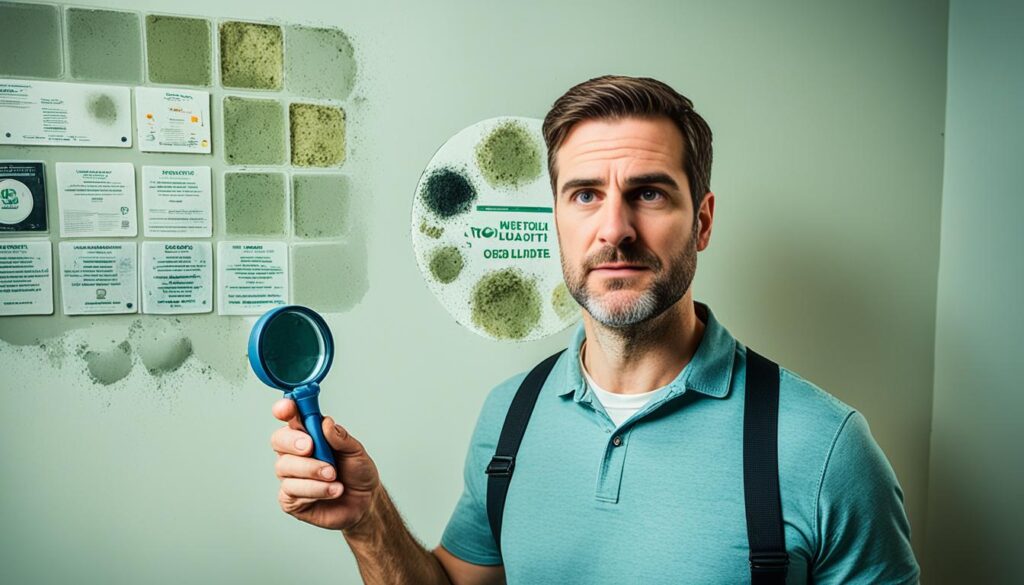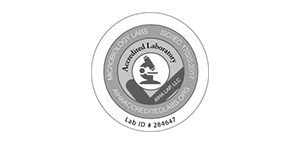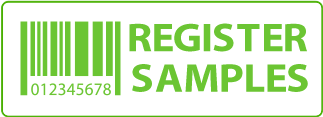
Can I Test Mold Myself?
When it comes to mold detection, many homeowners wonder if they can take matters into their own hands. DIY mold testing kits have become increasingly popular, offering a convenient and cost-effective way to assess mold presence in their living spaces. But are these kits reliable? Can you trust your own mold testing abilities? Let’s explore the world of DIY mold testing and find out.
Key Takeaways:
- DIY mold testing kits are readily available and can be used to detect mold in your home.
- It is essential to understand the impact of mold on health and the signs that may indicate the need for a mold test.
- While DIY testing can provide initial indications, professional testing offers more precise measurements and comprehensive assessments.
- Ensure you select the right mold testing kit for accurate and reliable results.
- Follow the step-by-step process and necessary safety precautions for DIY mold testing.
Understanding Mold And Its Impact On Health
Mold is a type of fungus that thrives in warm, moist environments and can be found both indoors and outdoors. When mold spores are present in high concentrations indoors, they can pose health risks to the occupants.
Exposure to mold can cause a variety of symptoms, including allergies, respiratory problems, skin irritation, and exacerbation of existing conditions such as asthma. Individuals with weakened immune systems, allergies, or respiratory conditions are particularly susceptible to the adverse effects of mold.
It is crucial to address mold issues promptly to maintain a healthy indoor environment. Poor indoor air quality due to mold can contribute to respiratory problems and other health complications. By understanding the impact of mold on health, homeowners can take appropriate measures to detect and address mold growth in their homes.
Sources: CDC – Mold
Signs That You May Need a Mold Test
There are several signs and indicators that may suggest the presence of mold in your home. One of the initial indications of a mold infestation is a musty odor, especially in areas that are damp or poorly ventilated. If you notice a lingering musty smell, it could be a sign of a mold problem.
Another clear sign of mold is visible mold growth. Mold can appear as black spots, patches, or fuzzy growth on surfaces, walls, or even behind fixtures. If you see any visible mold growth, it’s important to take immediate action to address the issue.
Water damage is another factor that can contribute to mold growth. Whether it’s from leaks, floods, or excessive moisture, water damage provides the perfect conditions for mold to thrive. If you’ve experienced any form of water damage, it’s crucial to closely monitor the area for signs of mold.
Allergy-like symptoms can also indicate mold presence in your home. If you or your family members are experiencing persistent sneezing, coughing, or watery eyes while indoors, but these symptoms improve when spending time outdoors, it could be a sign that mold is triggering allergic reactions.
If you notice any of these signs in your home, it is advisable to conduct a mold test to determine the extent of the issue and take appropriate remedial actions. A mold test will help you identify the presence of mold and guide you in implementing effective mold remediation strategies.
DIY Mold Testing: An Overview
DIY mold testing involves using test kits designed to detect the presence of mold in various areas of the home. These kits typically include sampling materials, instructions, and sometimes laboratory analysis services. While DIY testing can provide an initial indication of mold presence, it is important to note that the accuracy of these tests may vary.
DIY mold tests are generally not as precise as professional testing methods, but they can still be helpful in identifying mold issues and guiding further actions. However, it’s crucial to be aware of the limitations of DIY testing and consider professional testing services for more accurate and comprehensive results.
It’s important to understand that DIY mold testing should be viewed as a starting point for mold detection rather than a definitive assessment. Professional mold testing methods often employ more advanced techniques and equipment, resulting in more accurate measurements and comprehensive assessments.
While DIY mold testing kits can provide essential information, it is important to consider their limitations. Factors such as the kit’s quality, sampling technique, and laboratory analysis (if applicable) can affect the accuracy of the results.
Professional mold testing services may be necessary if you require a thorough assessment or have complex mold issues. These services offer expertise, specialized equipment, and more accurate measurements to identify mold types and concentrations.
In conclusion, DIY mold testing can be a valuable tool for homeowners seeking initial indications of mold presence. However, it is essential to recognize the limitations of DIY testing and consider professional mold testing services for a comprehensive assessment and remediation plan.
Can I Test Mold Myself?
Yes, you can test mold yourself using DIY mold testing kits readily available in the market. These kits provide a convenient and cost-effective way to determine the presence and extent of mold in your home. By following the instructions provided with the kit carefully, you can ensure accurate sampling for reliable results.
However, it is important to take necessary safety precautions while conducting DIY mold testing. Wear protective gloves and a mask to prevent exposure to mold spores, ensuring your well-being throughout the process.
While DIY mold testing can be effective, it is essential to understand its limitations. Professional testing services may be needed for a more comprehensive assessment or if you require expert guidance. By considering safety precautions and the advantages of professional testing when necessary, you can effectively detect and address mold issues in your home.
Selecting the Right Mold Testing Kit
When it comes to DIY mold testing, selecting the right mold testing kit is essential to ensure accurate and reliable results. With a wide range of options available on the market, it’s important to consider certain factors before making a decision.
- Accuracy: One of the key considerations when choosing a mold testing kit is its accuracy. Some DIY testing methods may not provide precise measurements, which can affect the reliability of the results. Look for kits that are known for their accuracy to ensure you get dependable information about the presence and extent of mold in your home.
- Ease of Use: If you have limited experience with mold testing, it’s important to consider the ease of use of the kit. Look for kits that come with clear and detailed instructions, making it easier for you to collect samples correctly. An easy-to-use kit will help you avoid errors and obtain accurate results.
- Laboratory Analysis: Another crucial factor to consider is whether the mold testing kit offers laboratory analysis services. This means that you can send your samples to a professional laboratory for examination and analysis. Having your samples analyzed by experts provides an additional level of confidence in the accuracy of the results.
One highly recommended mold testing kit that meets these criteria is the Mold Detective . This kit is known for its accuracy, ease of use, and includes laboratory analysis services. By choosing a reputable mold testing kit, you can ensure that your samples are professionally examined, giving you peace of mind in the results.
Remember to read reviews and compare different kits to find one that suits your specific needs and budget. Taking the time to select the right mold testing kit will help you obtain accurate results and make informed decisions regarding remediation if needed.
Step-By-Step Process for DIY Mold Testing
To conduct DIY mold testing, follow these step-by-step guidelines:
- Read and understand the instructions provided with the mold testing kit.
- Determine the areas of your home where you suspect mold growth or where mold is most likely to be present.
- Collect mold samples according to the testing kit instructions, using the provided materials.
- Seal the samples properly and send them to the designated laboratory for analysis, if applicable.
- Wait for the results and interpret them based on the instructions provided with the kit.
- Take necessary remedial actions if the test confirms the presence of mold, such as addressing the moisture source and contacting professionals for further assistance if needed.
It is important to note that DIY mold testing should serve as an initial indication, and professional testing may be necessary for a thorough assessment and remediation plan.
Conclusion
DIY mold testing can provide a viable option for homeowners looking to identify mold issues in their homes. With the convenience and cost-effectiveness it offers, many individuals opt for DIY testing kits. However, it is important to understand the limitations of these kits and manage expectations regarding their accuracy.
For more precise measurements and comprehensive assessments, professional mold testing services are available. Particularly in complex cases or for those seeking expert guidance, these services can be beneficial. Professionals can provide a thorough evaluation of the mold situation and guide homeowners through the necessary remediation steps.
Whether you choose to conduct DIY mold testing or prefer professional services, addressing mold issues promptly is crucial for maintaining a healthy indoor environment. Mold can pose significant health risks, particularly for individuals with allergies or respiratory conditions. By taking necessary safety precautions during the testing process and consulting professionals when needed, homeowners can effectively detect and remediate mold problems, ensuring the well-being of their families and the longevity of their properties.







